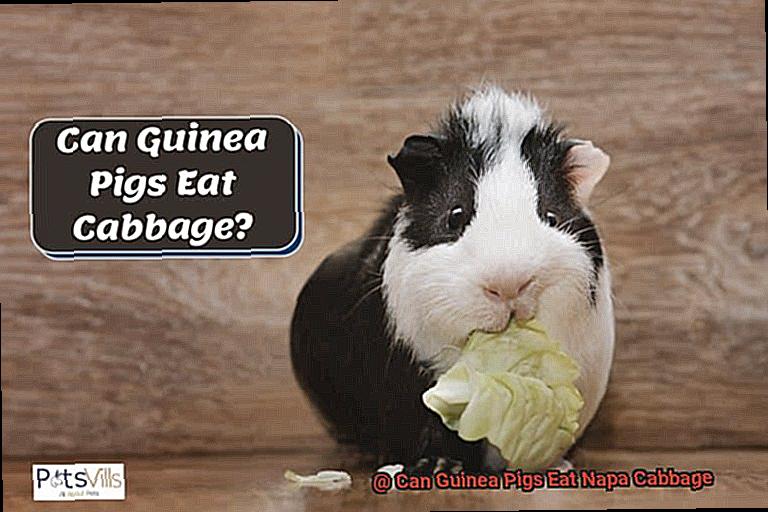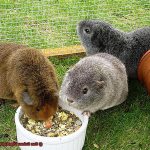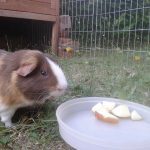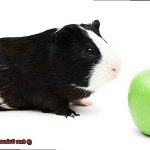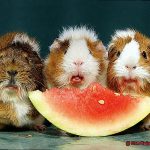Calling all guinea pig enthusiasts and lovers.
Are you curious if your furry friend can munch on the crisp and sweet Napa cabbage? Well, look no further because this post has got you covered.
Guinea pigs are known for their insatiable appetite for fresh greens and veggies. However, not all vegetables are created equal, and some may pose a risk to our little buddies.
That’s why we’re here to answer the burning question: can guinea pigs eat Napa cabbage? In this post, we’ll take a deep dive into the world of Napa cabbage and explore whether it’s a safe and healthy option for your furry friend.
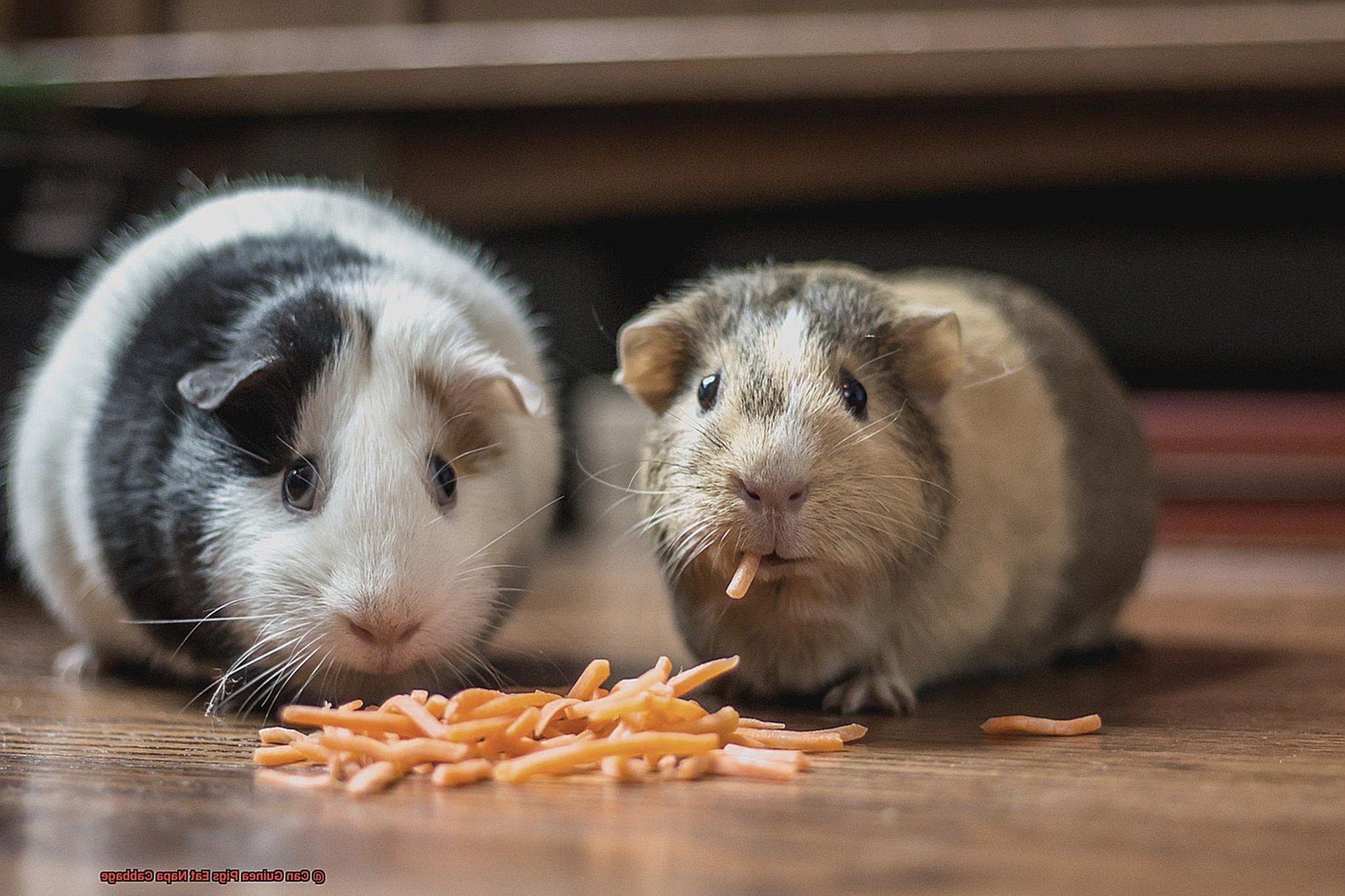
From its nutritional value to potential risks and benefits, we’ve got you covered. Plus, we’ll give you tips on how to incorporate it into your guinea pig’s diet.
But before we get started, let’s chat about an interesting factoid about Napa cabbage. Did you know that it’s also referred to as Chinese cabbage or celery cabbage due to its long stems that resemble celery?
So, let’s start now.
Nutritional Benefits of Napa Cabbage for Guinea Pigs
Contents
Napa cabbage is packed with essential vitamins and minerals that can benefit your furry friend’s health. Not only is Napa cabbage a tasty treat option for guinea pigs, but it also contains valuable nutrients like vitamin C, vitamin K, vitamin B6, folate, calcium, and potassium.
Vitamin C is especially crucial for guinea pigs as they cannot produce it on their own. This vitamin plays an essential role in their immune system and overall health.
What’s more, Napa cabbage is a rich source of antioxidants like beta-carotene and flavonoids. These compounds can help protect your guinea pig against free radical damage and reduce the risk of chronic diseases.
Plus, the high fiber content in Napa cabbage promotes healthy digestion in guinea pigs and can prevent digestive issues such as diarrhea and constipation. However, it’s important to remember that Napa cabbage should not be the sole source of food for your guinea pig.
This vegetable lacks certain nutrients like vitamin D and protein that are crucial for your furry friend’s health. To ensure a well-balanced diet, offer a variety of vegetables alongside hay, pellets, and fresh water.
When feeding Napa cabbage to your guinea pig, be sure to wash it thoroughly and introduce it gradually to prevent any digestive issues.
As with any new food or change in diet, monitor your guinea pig’s reaction closely and consult with a veterinarian if you have any concerns about their health or diet.
Potential Health Risks of Feeding Napa Cabbage to Guinea Pigs
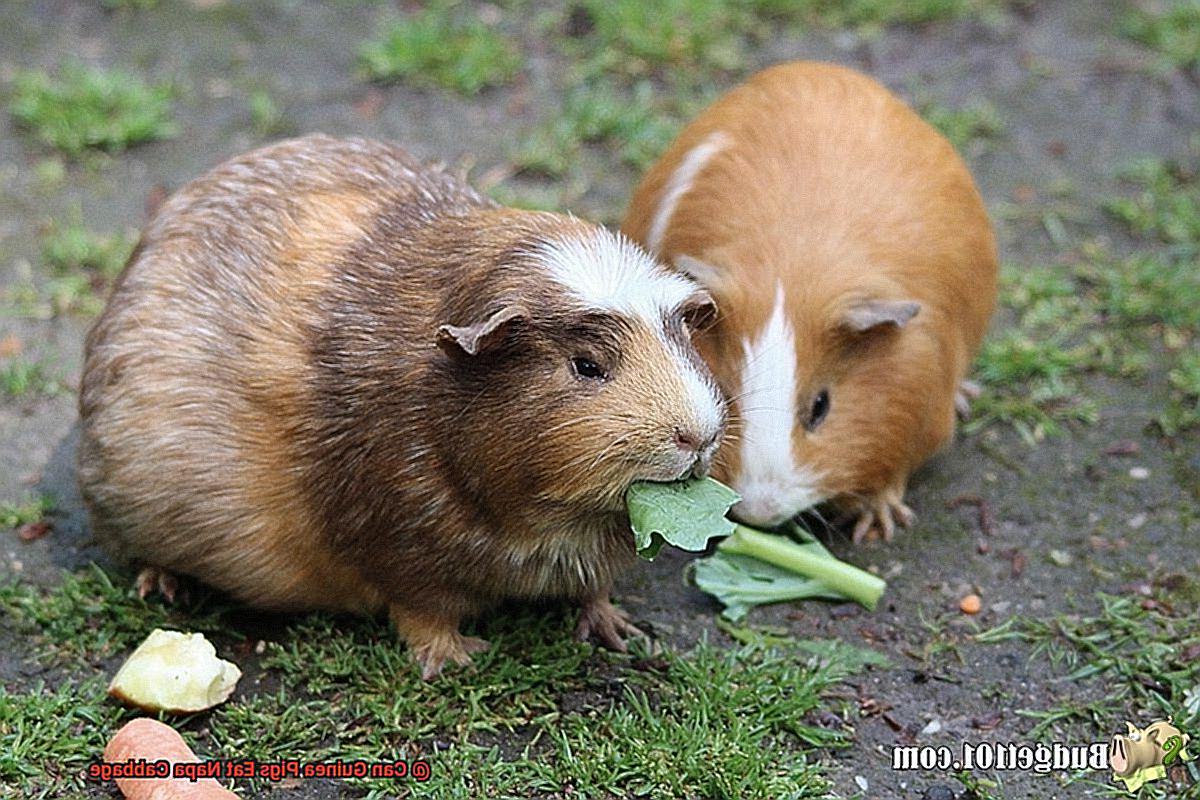
Napa cabbage is a great option, but it’s important to be aware of the potential health risks associated with feeding it to your furry friend.
Firstly, Napa cabbage contains high levels of oxalic acid, which can combine with calcium in the body and result in bladder and kidney stones.
Guinea pigs require a diet rich in calcium for healthy bones and teeth, so it’s crucial to limit the amount of Napa cabbage they consume and ensure that it’s not their primary source of calcium.
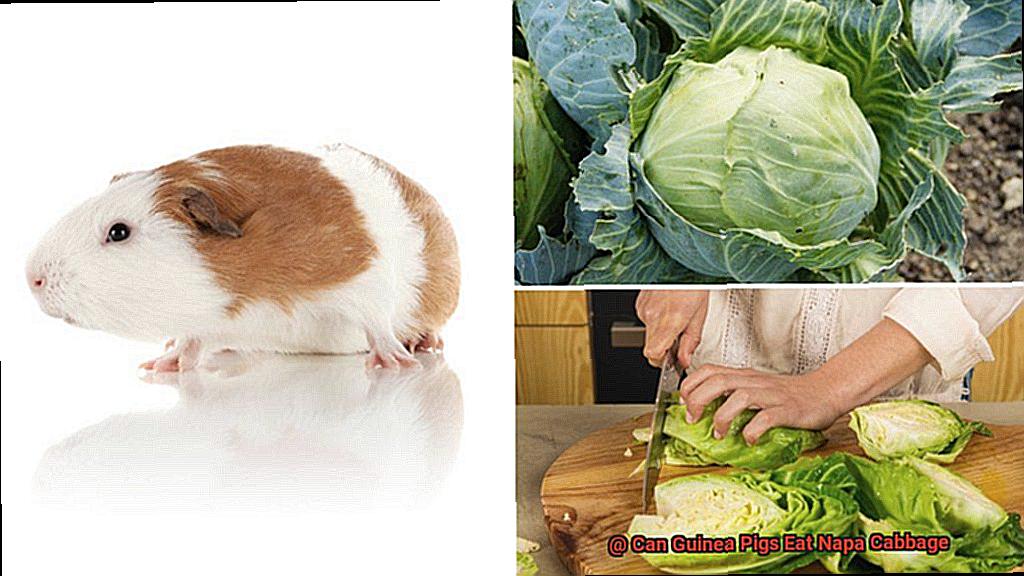
Another concern is Napa cabbage’s high water content. While hydration is essential for guinea pigs, too much water-rich food like Napa cabbage can lead to digestive issues like diarrhea.
Excessive water consumption can also cause an electrolyte imbalance, leading to a loss of appetite. Lastly, Napa cabbage contains goitrogens that can interfere with thyroid function.
While small amounts of these compounds aren’t harmful, consuming excessive quantities over a prolonged period can be problematic. Thus, it’s vital to include Napa cabbage as only a small part of your pet’s overall diet and avoid feeding it every day.
How to Feed Napa Cabbage to Guinea Pigs
If you’re looking for a nutritious and tasty treat to add to your guinea pig’s diet, Napa cabbage is a great option. However, it’s important to remember that moderation is key when it comes to feeding Napa cabbage to your furry friend.
Here are some tips on how to feed Napa cabbage to your guinea pig.
Before feeding Napa cabbage to your guinea pig, it’s important to wash it thoroughly to remove any pesticides or chemicals. Cut the cabbage into small, bite-sized pieces and remove the tough core to make it easier for your guinea pig to eat.
Moderation is Key
While Napa cabbage is a healthy addition to your guinea pig’s diet, it should only be given in moderation. Guinea pigs require a diet that is high in fiber and vitamin C, but too much calcium can cause health problems such as bladder stones or kidney issues. So ensure that Napa cabbage only makes up a small portion of your guinea pig’s diet.
Introducing Napa Cabbage to Your Guinea Pig’s Diet
When introducing Napa cabbage to your guinea pig’s diet, do so slowly and in small amounts. This will help prevent digestive upset such as bloating or diarrhea. Start by offering a small piece of Napa cabbage and gradually increase the amount over several days.
Monitoring Your Guinea Pig’s Health
As with any new food, it’s important to monitor your guinea pig’s reaction when introducing Napa cabbage to their diet. Keep an eye out for any signs of digestive upset or allergic reactions such as itching or swelling. If you notice any adverse reactions, stop feeding them Napa cabbage immediately and consult with a veterinarian.
In conclusion, feeding Napa cabbage to your guinea pig can be a healthy and tasty addition to their diet when done in moderation and with proper care. Remember, variety is key in ensuring a balanced diet for your furry friend, so don’t be afraid to mix it up with other vegetables such as bell peppers or carrots.
What Other Vegetables Can Guinea Pigs Eat?
Guinea pigs are herbivores, which means their diet should mainly consist of vegetables and fruits.
To keep your guinea pig healthy, it’s essential to offer them a variety of veggies rich in vitamins and minerals. Some great options include cucumber, bell peppers, carrots, spinach, kale, and parsley.
These veggies are not only delicious but also packed with nutrients that will benefit your furry friend’s overall health. It is important to note that guinea pigs should avoid vegetables high in calcium or oxalic acid.
Consuming these vegetables in large quantities can lead to health issues. So, it’s best to steer clear of rhubarb, spinach, and beet greens and opt for other veggies instead.
When introducing new vegetables to your guinea pig’s diet, it’s crucial to do so gradually. Starting with small portions will help prevent digestive issues and ensure a smooth transition to new foods.
By monitoring your pet’s reaction, you can determine which veggies they enjoy the most. Remember to offer fresh vegetables daily in moderation.
Tips for Introducing New Foods into a Guinea Pig’s Diet
Introducing new foods into their diet is a great way to keep them healthy and happy, but it’s important to do it safely. Here are 5 tips for introducing new foods into your guinea pig’s diet:
Start small with new foods. Begin by offering only a few leaves or a small piece of the new food item. This allows your guinea pig to adjust to the taste and texture without overwhelming their system.
Introduce one food at a time. Adding too many new foods at once can be confusing for your guinea pig, and it makes it challenging to identify which foods they enjoy and which ones they don’t.
Monitor for any adverse reactions. After introducing a new food item, watch for signs of discomfort such as diarrhea, lethargy or decreased appetite that may indicate an adverse reaction.
Offer fresh fruits and vegetables. Guinea pigs require fresh produce in their diet to stay healthy, so offer a variety of fruits and vegetables and rotate them regularly.
Avoid high sugar and high-fat foods. These can cause obesity and other health problems in guinea pigs, so stick to healthy treats like carrots or bell peppers.
When to Seek Veterinary Care for Your Guinea Pig
While guinea pigs are generally hardy animals, there are certain situations where you should seek veterinary care for them.
Firstly, if you notice any changes in your guinea pig’s behavior or appetite, it’s crucial to monitor them closely and seek veterinary care if the changes persist. These changes could be an indication of an underlying health issue that needs immediate attention.
Think of it like noticing a small problem and addressing it before it becomes a major issue. In particular, if your guinea pig stops eating or drinking altogether, this is a serious concern and requires immediate veterinary attention.
Guinea pigs require frequent eating to maintain their health, so a loss of appetite can quickly escalate into a life-threatening situation. Imagine being stranded without food or water – that’s what your guinea pig could be experiencing.
Respiratory issues are also common in guinea pigs and can quickly become serious. If your guinea pig is coughing or wheezing, has discharge from their nose or eyes, or is struggling to breathe, they need to see a veterinarian as soon as possible.
Just like when you have a cold, respiratory issues can escalate and lead to more severe health problems if not addressed promptly. If your guinea pig has any visible wounds or injuries, such as cuts or bite marks, it’s important to take them to the vet for treatment.
Guinea pigs may hide signs of injury or illness since they are prey animals, so always keep a close eye on them and seek veterinary care if you suspect anything is wrong.
Overall, being proactive about your guinea pig’s health is key.
fm6aHa1HHCA” >
Conclusion
In summary, Napa cabbage can be a nutritious and healthy addition to your guinea pig’s diet when given in moderation and with proper care.
This low-calorie vegetable is jam-packed with essential vitamins and minerals that can benefit your furry friend’s health, including vitamin C, vitamin K, vitamin B6, folate, calcium, and potassium.
However, it’s crucial to remember that Napa cabbage should not replace other nutrients like protein and vitamin D that are necessary for your guinea pig’s well-being.
Before feeding Napa cabbage to your guinea pig, ensure you wash it thoroughly and introduce it gradually to prevent any digestive issues. As with any new food or change in diet, keep a close eye on your guinea pig’s reaction and consult with a veterinarian if you have any concerns about their health or diet.
Remember to provide fresh vegetables daily in moderation alongside hay, pellets, and clean water for a balanced diet.
Variety is key in ensuring a well-rounded meal plan for your furry friend so don’t hesitate to mix it up with other veggies such as cucumber, bell peppers, carrots, spinach, kale, parsley among others.

